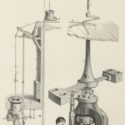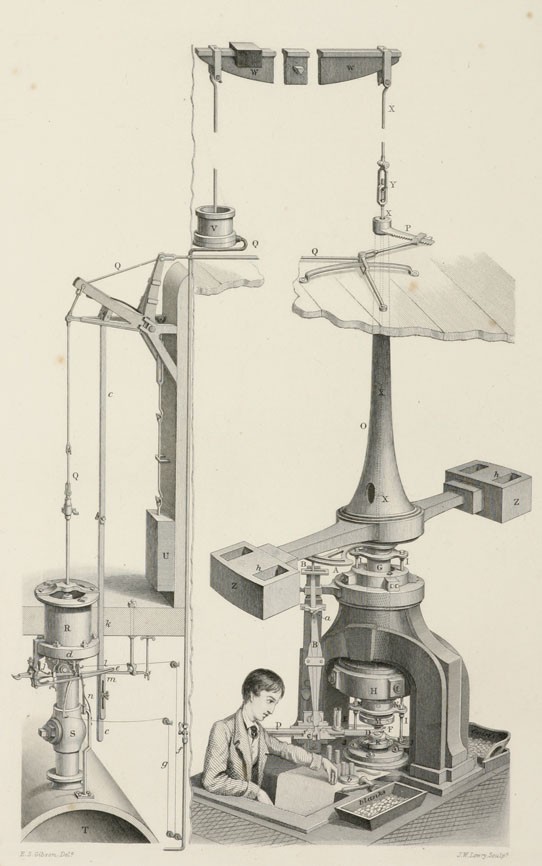A Scion Society of The Baker Street Irregulars

Coinage Presses and The Engineer’s Thumb
“We are now,” said he, “actually within the hydraulic press …”
– The Adventure of the Engineer’s Thumb (ENGR)
Towards the end of The Engineer’s Thumb, we learn that the hydraulic press that Victor Hatherley is hired to inspect and suggest a course of repair is actually being used to strike counterfeit coins. I have always been troubled by the below passage that Arthur Conan Doyle wrote for the story:
‘”We are now,” said he, “actually within the hydraulic press, and it would be a particularly unpleasant thing for us if anyone were to turn it on. The ceiling of this small chamber is really the end of the descending piston, and it comes down with the force of many tons upon this metal floor. There are small lateral columns of water outside which receive the force, and which transmit and multiply it in the manner which is familiar to you. The machine goes readily enough, but there is some stiffness in the working of it and it has lost a little of its force. Perhaps you will have the goodness to look it over, and to show us how we can set it right.”
‘I took the lamp from him, and I examined the machine very thoroughly. It was indeed a gigantic one, and capable of exercising enormous pressure. When I passed outside, however, and pressed down the levers which controlled it, I knew at once by the whishing sound that there was a slight leakage, which allowed a regurgitation of water through one of the side cylinders. An examination showed that one of the india-rubber bands which was round the head of a driving- rod had shrunk so as not quite to fill the socket along which it worked. This was clearly the cause of the loss of power, and I pointed it out to my companions, who followed my remarks very carefully, and asked several practical questions as to how they should proceed to set it right. When I had made it clear to them, I returned to the main chamber of the machine, and took a good look at it to satisfy my own curiosity. It was obvious at a glance that the story of the fuller’s earth was the merest fabrication, for it would be absurd to suppose that so powerful an engine could be designed for so inadequate a purpose. The walls were of wood, but the floor consisted of a large iron trough, and when I came to examine it I could see a crust of metallic deposit all over it. I had stooped and was scraping at this to see exactly what it was, when I heard a muttered exclamation in German, and saw the cadaverous face of the Colonel looking down at me.
This seems outrageously large to me. According to the chronologists, this story takes place in 1889. Now take a look at this video of a steam powered coinage press from the Carson City mint that was functioning from 1870 – 1885 and again from 1889 until 1893.

To our left, we have a circa 1868 illustration of a Boulton screw press that was being used at the British Royal Mint. While much larger than the press at the Carson City mint, I don’t see any India-rubber bands or any descending pistons large enough to crush a man.
It’s important to remember that the actual coinage dies on the press would only move a few inches (if that much) during the striking process.
It seems unreasonable that there would be a area large enough to fit three grown men under a piston that could crush them as the story suggests.
Do we have any engineers in our reading audience that could shed some light on this matter?

Sorry, comments are closed for this post.